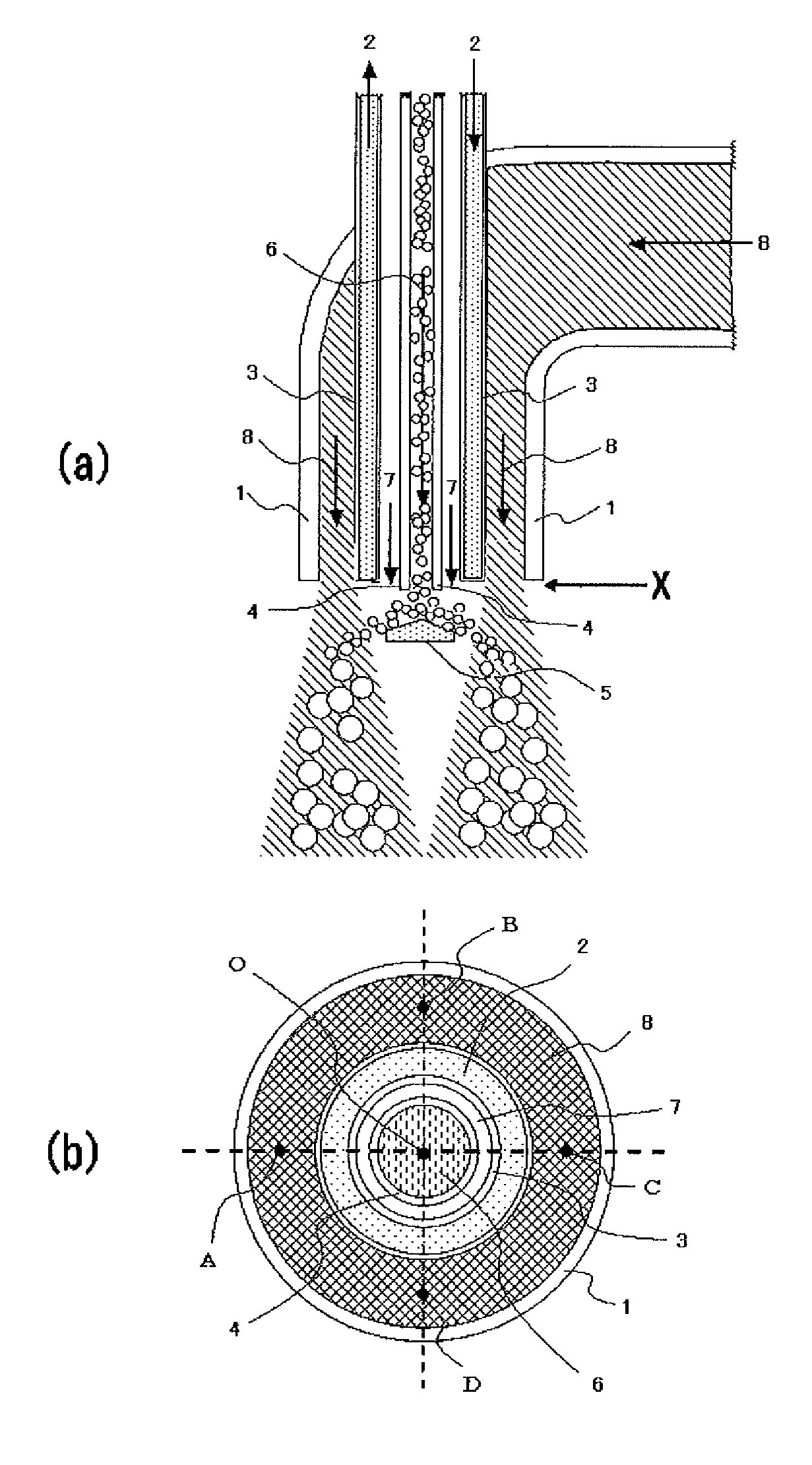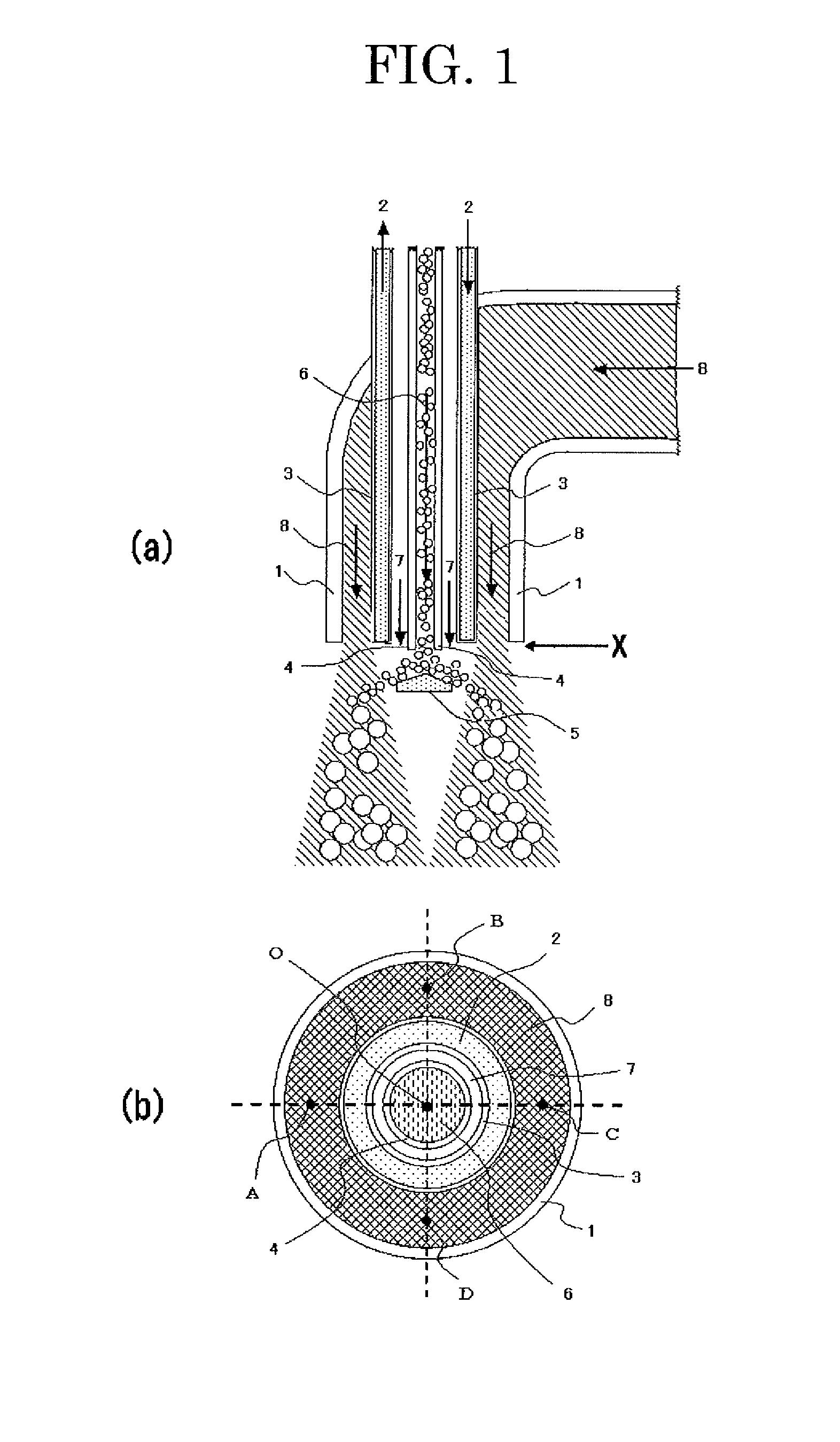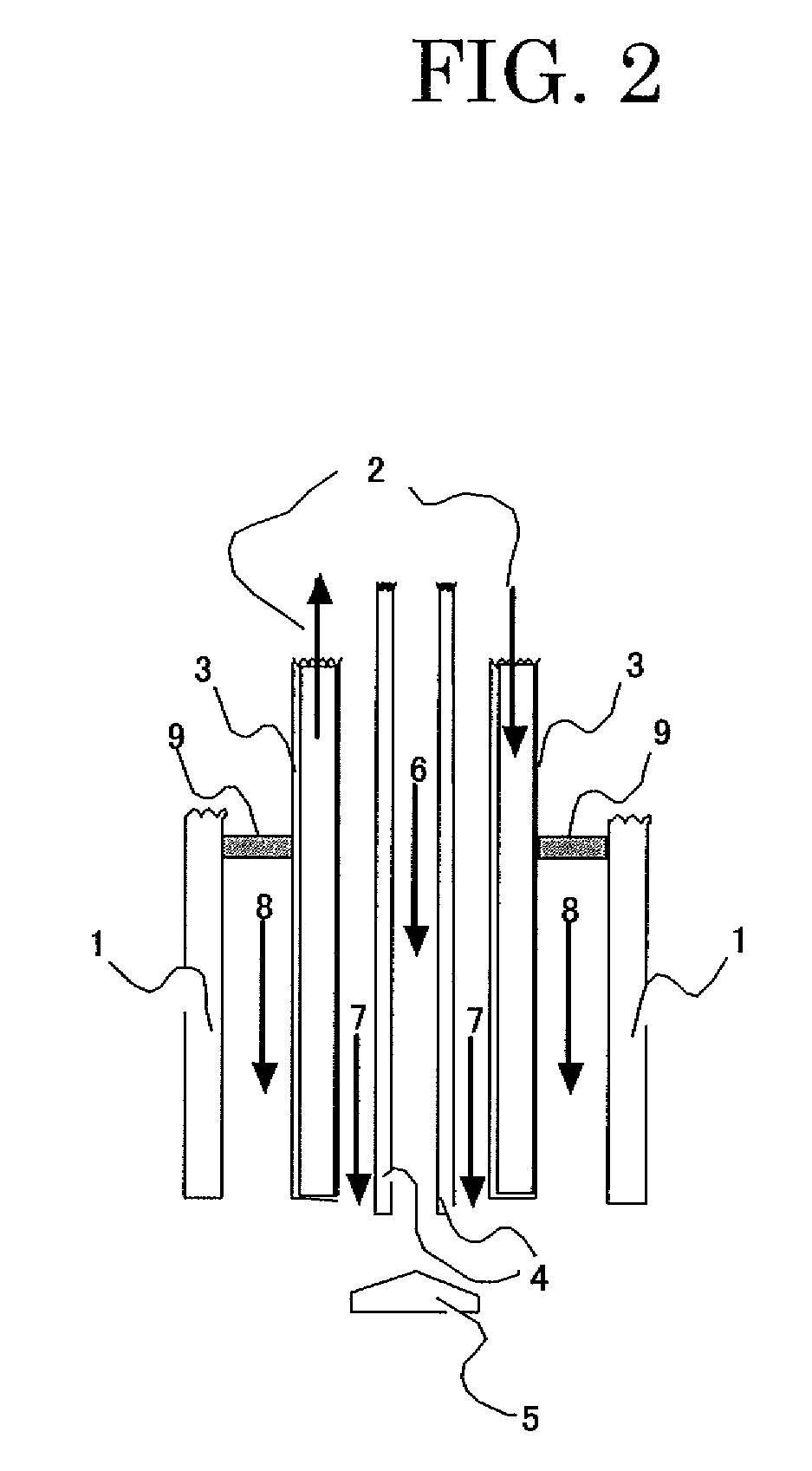Thermally expanded microspheres and a process for producing the same
a technology of thermal expansion and microspheres, which is applied in the direction of cellulosic plastic layered products, natural mineral layered products, transportation and packaging, etc., can solve the problems of high probability of aggregated microcapsules at the end of the spraying, and achieve high packing efficiency, excellent flowability, and high true specific gravity
- Summary
- Abstract
- Description
- Claims
- Application Information
AI Technical Summary
Benefits of technology
Problems solved by technology
Method used
Image
Examples
example 1
[0133]Heat-expanded microspheres were produced by heating and expanding MATSUMOTO MICROSPHERE F-100D (produced by Matsumoto Yushi-Seiyaku Co., Ltd., comprising nitrile copolymer as thermoplastic resin shell, with an average particle size of 25 micrometer) with the manufacturing equipment equipped with an expanding device (with a metal mesh of No. 30 mesh as a turbulent flow generating member) shown in FIG. 2. Before the dispersed heat-expandable microspheres contact to hot gas flow 8, the temperature at each of the points in the hot gas flow 8 (which were eight points locating underneath the hot gas nozzle in almost similar distance from the nozzle and being arranged in almost similar distance from adjacent points) was determined, and the difference in the temperature (between the highest and lowest temperature values) was 30 degree.C.
[0134]The expanding conditions were controlled into 0.10 kg / h for raw material feeding rate, 0.03 m3 / min for the flow rate of gas containing dispersed...
example 2
[0135]Heat-expanded microspheres were produced by heating and expanding the microspheres in the same manner as in Example 1, except that the manufacturing equipment was replaced with an equipment equipped with the expanding device (with a ring as a turbulent flow generating member) shown in FIG. 3. The difference in the temperature was 5 degree.C.
[0136]The property of the resultant expanded microspheres was determined and shown in Table 1.
example 3
[0137]Heat-expanded microspheres were produced by heating and expanding the microspheres in the same manner as in Example 1, except that the manufacturing equipment was replaced with an equipment equipped with the expanding device (with an expansion chamber as a turbulent flow generating member) shown in FIG. 4. The difference in the temperature was 1 degree.C.
[0138]The property of the resultant expanded microspheres was determined and shown in Table 1.
PUM
| Property | Measurement | Unit |
|---|---|---|
| particle size | aaaaa | aaaaa |
| gage pressure | aaaaa | aaaaa |
| gage pressure | aaaaa | aaaaa |
Abstract
Description
Claims
Application Information
 Login to View More
Login to View More - R&D
- Intellectual Property
- Life Sciences
- Materials
- Tech Scout
- Unparalleled Data Quality
- Higher Quality Content
- 60% Fewer Hallucinations
Browse by: Latest US Patents, China's latest patents, Technical Efficacy Thesaurus, Application Domain, Technology Topic, Popular Technical Reports.
© 2025 PatSnap. All rights reserved.Legal|Privacy policy|Modern Slavery Act Transparency Statement|Sitemap|About US| Contact US: help@patsnap.com



